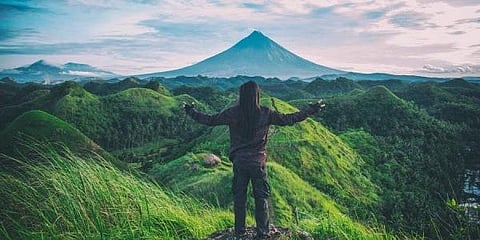

Since time immemorial, India has been known as a land of seekers and explorers. Travelling has been more than just a means to unburden oneself, it is a path to wisdom and self-discovery. Our ancient scriptures are full of pearls of wisdom reiterating the importance of travel. The heroes in our ancient epics—Lord Rama, and Arjuna—when exiled, embarked on journeys to previously uncharted territories to observe, learn, assimilate and grow as individuals in the process.
This year, we are celebrating National Tourism Day with a focus on rural tourism, local communities and sustainable living. For millennia, India has drawn from the age-old wisdom of her saints and philosophers, and has harmoniously cohabited with nature. Today, the world calls this sustainable living. Keeping the spirit alive and inspiring the world are villages like Dhaj in Gujarat, India’s first eco-village, or God’s Own Garden in Mawlynnong, Meghalaya, which has earned fame as Asia’s cleanest village. The recent declaration of Pochampally village in Telangana by the United Nations World Tourism Organisation as one of the ‘Best Tourism Villages’ stands testimony to the scope of rural tourism in India.
Several efforts are underway to further build on this potential and open our rural areas to limitless opportunities. For the first time, India has released a Draft Rural Tourism Strategy, which is giving shape to our efforts. The strategy would not only pave the way for economic development of our villages but also provide fresh energy to our arts and heritage. Through a holistic and sustainable rural tourism strategy, we have the opportunity to fuse Indian hospitality with breathtaking scenery, a symbiotic relationship with nature, and a rich arts, crafts and cultural heritage that our villages can offer.
Some of these riches that rural areas have to offer are inhabited by the most marginalised such as tribal and forest-dwelling communities. The strategy therefore aims to couple experiential living and activities in a sensitive manner, keeping the dignity of these communities at the centre. Our aim is to empower these communities economically by skilling them and integrating them into the tourism supply chain so that they can run their own eco home stays, operate logistics services, and act as guides, tour operators, etc. This is the prime minister’s vision: of looking at tourism as a medium that can deliver welfare and prosperity to local communities that directly benefit from the jobs and development opportunities that it offers.
Over the last seven years, several schemes have been implemented to improve tourism services, infrastructure, capacity and skill. Under the Swadesh Darshan Scheme 1.0, projects worth `5,588.44 crore have been implemented, paving the way for a strong tourism ecosystem in the nation. Several rural tourism projects across multiple themes such as Eco Circuit, Himalayan Circuit, Desert Circuit, Tribal Circuit and Wildlife Circuit are helping build robust tourism infrastructure in and around our rural areas. The next version of Swadesh Darshan Scheme will further build on this to give a fillip to eco-tourism projects.
However, to completely unlock this potential, there is a need for collective action from the Central and state governments and private stakeholders along with the local communities. We are providing an enabling environment for entrepreneurs and thought leaders from within the host communities to curate their villages as exemplary rural tourism hubs. The enthusiasm from the private sector to come forth and establish innovative projects, set up eco-friendly hotels in rural pockets, build capacities of rural artisans, and lend their expertise to local communities shows that there is a clear demand for such experiences.
Today, the world tourism community stands at the cusp of change. Where on one hand the pandemic has pushed the community to rethink travel and alleviate the economic stress, on the other hand, climate change is forcing us to turn towards sustainability. Moving beyond just sustainability, the fraternity is abuzz with concepts such as transformational, positive impact and regenerative tourism. We are witnessing a paradigm shift from an industrial model to a more interdependent, community-oriented and mutually beneficial ecosystem. At this juncture, India has an edge over the world because of our rich cultural heritage and traditional knowledge thriving in our hinterlands. We are now ready to unleash this potential and enlighten our younger generation to the treasure that we hold and also the world at large looking for destinations off the beaten track.
In his Independence Day speech of 2019, Prime Minister Narendra Modi exhorted all Indians to visit at least 15 locations by 2022. Unfortunately, due to the Covid-19 pandemic, this was not possible. However, with more than 160 crore vaccination doses administered, a strengthening of medical infrastructure and a recession of the Omicron variant, there could be an opportunity for travel to resume in 2022 itself. A journey to the rural hinterland to explore the magnificent offerings of our villages could be a worthy resumption to travel. Prospective travellers looking forward to explore this incredible rural India could be well served using this verse from the Aitareya Brahmana of the Rigveda for inspiration: “The feet of the wanderer are like the flower, his soul is growing and reaping the fruit; and all his sins are destroyed by his fatigues in wandering. Therefore, wander!”
G Kishan Reddy
Union Minister for Tourism, Culture and Development of Northeastern Region
(kishanreddy.g@sansad.nic.in)